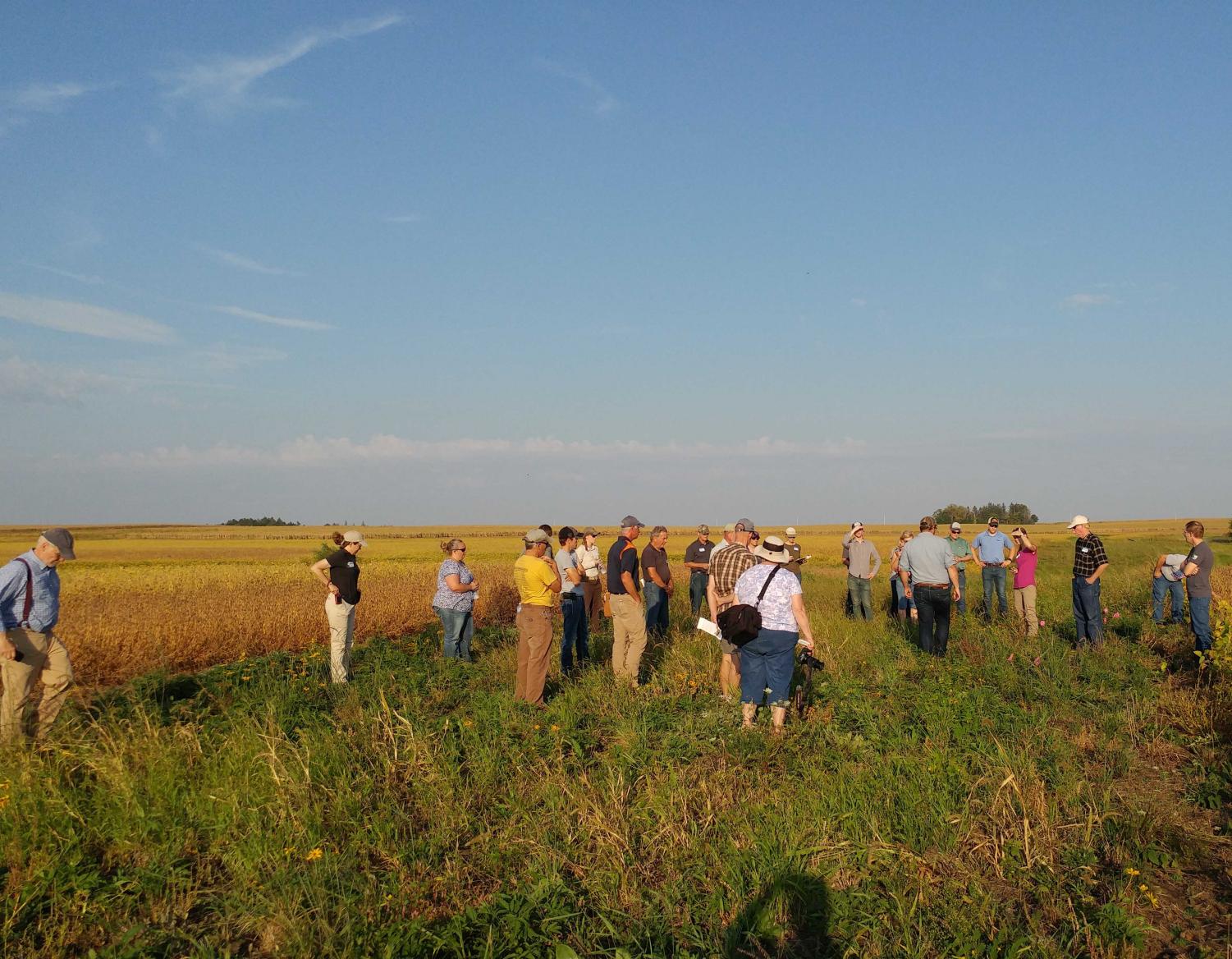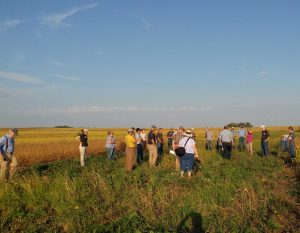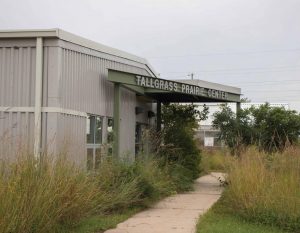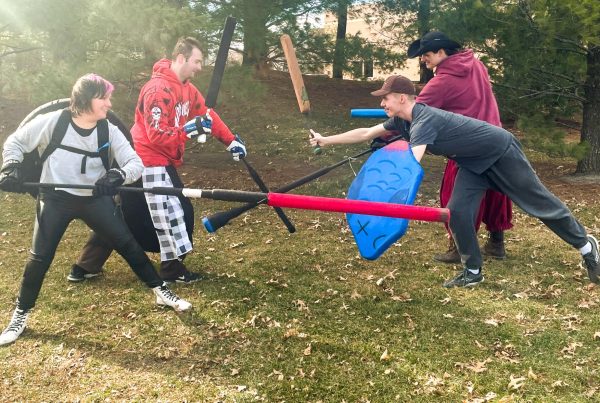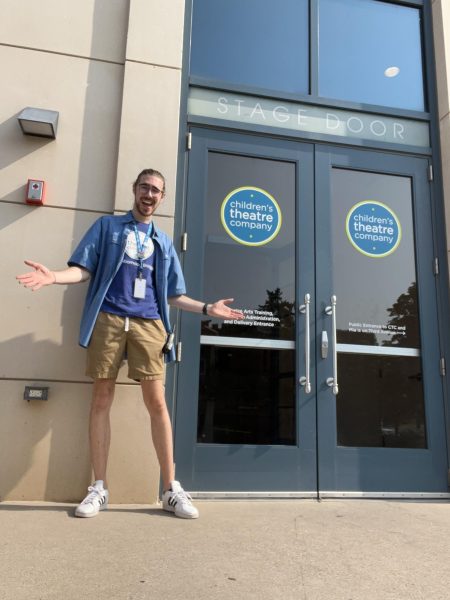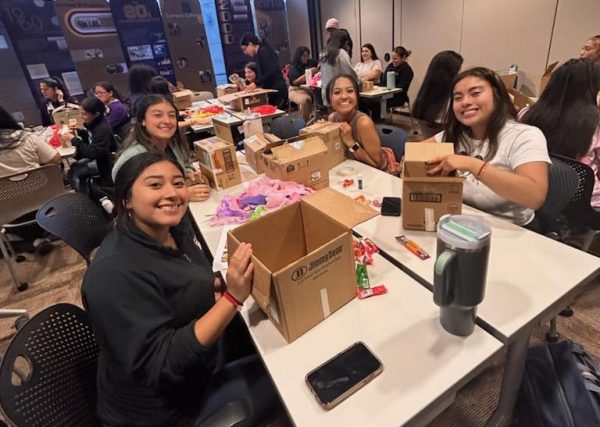Tallgrass Prairie Center educates during field day
Sep 10, 2018
On Thursday, Sep. 13 at 4:30 p.m., the UNI Tallgrass Prairie Center will host a field day at J.H. Roadman Memorial Park in Dike alongside Iowa State University STRIPS (Science-based Trials of Rowcrops Integrated with Prairie Strips) team.
The event is an educational opportunity centered around the benefits of field prairie strips and saturated buffers. Attendees will be able to learn about other important agricultural concerns such as weed control and water quality improvement. The event is free and includes a complimentary dinner.
“We’ve been trying to host field days just to bring conservation planners and other landowners, watershed coordinators—any individual or organization that is involved with establishing conservation practices of natives on ag fields we invite,” said Ashley Kittle, who is the Prairie on Farms program manager for the Tallgrass Prairie Center. “We just show them kind of the process and what we did, try to give an opportunity for them to ask questions. It’s a good way to get landowners that might be interested in this an opportunity to kind of walk-through and visualize this on their own. Just kind of ask questions and see how it’s done.”
The Tallgrass Prairie Center tries to have at least two field days a year, usually in June and September. These events are in line with the Tallgrass Prairie Center’s mission—according to their website—to restore native vegetation for the benefit of society and the environment, with research, education and technology transfer.
“Generally, we focus more on the conservation planners, so the federal and state employees that typically work with landowners. But we definitely want to see landowners there [at the field days] as well,” Kittle said. “So it’s a mixed audience of either conservation planners and technical service providers and then landowners. Sometimes we just get prairie enthusiasts, just people who wanna know general benefits of prairies.”
Prairie on Farms is the program within the Tallgrass Prairie Center that oversees the field days. This program was founded in 2015 to focus on planting and improving prairies on agricultural lands. Since its inception, Prairie on Farms has planted over 60 acres of diverse native prairie in row crop systems.
Prairies have numerous agricultural and environmental benefits, according to Kittle. Because they absorb runoff, they can help prevent flash flooding. Prairies also provide a habitat for pollinators, which helps combat the decline of bees and monarch butterflies.
Not long after the Prairie on Farms program started, the Tallgrass Prairie Center partnered with the STRIPS team from Iowa State University. STRIPS focuses on how strategically placing in-field prairie strips results in better water quality. These strips are generally 30-feet wide and intercept runoff from entering the water.
“So you’re taking about 10 percent of the land out of production and putting it into natives, but it can provide a whole list of environmental benefits to reduce nitrogen and phosphorous and sedimentation and soil erosion,” Kittle said.
The Prairie on Farms program is primarily concerned with site prep and prairie maintenance. They help determine the best soils, such as choosing dryer or wetter sites depending on the type of seed being planted.
“You don’t want to just throw seed out. You want to make sure it’s the right seed, so you’re not wasting your money,” Kittle said. “And you want to have a successful planting that will be there long-term and not just go to weeds in a couple years.”
Back in 2016, STRIPS laid out 11 acres of native vegetation at the J.H. Roadman Memorial Park in Dike. STRIPS wanted to partner with the Tallgrass Prairie Center because of their close location and infrastructure. Prairie on Farms designed the seed mix for the strips and provided equipment such as the tractor and drill.
“We help provide information and those resources to have a successful planting,” Kittle said. “Between Iowa State’s research on water quality and our research on designing the right mix and getting a successful planting, it’s a pretty good combination of resources for landowners.”


